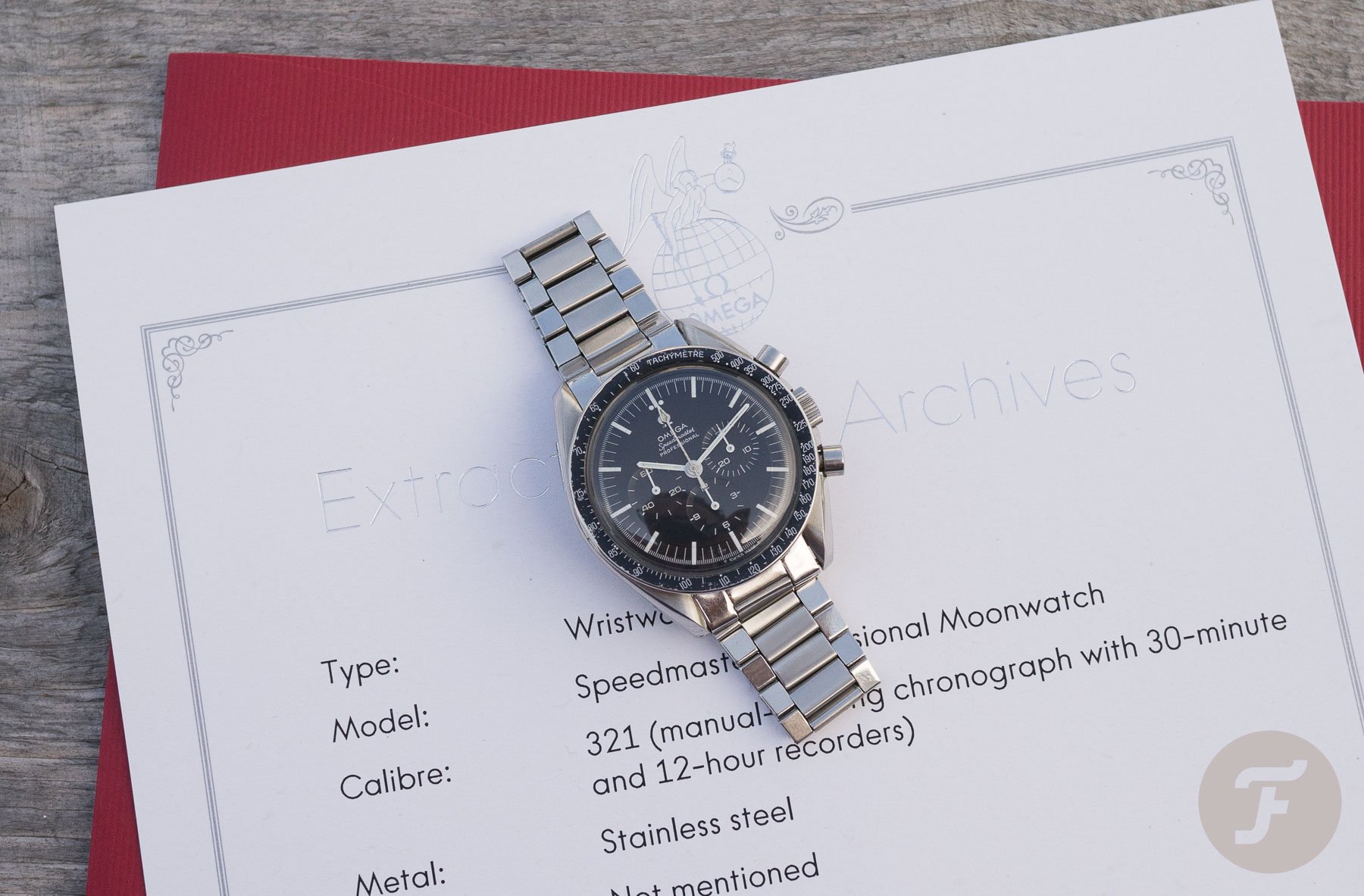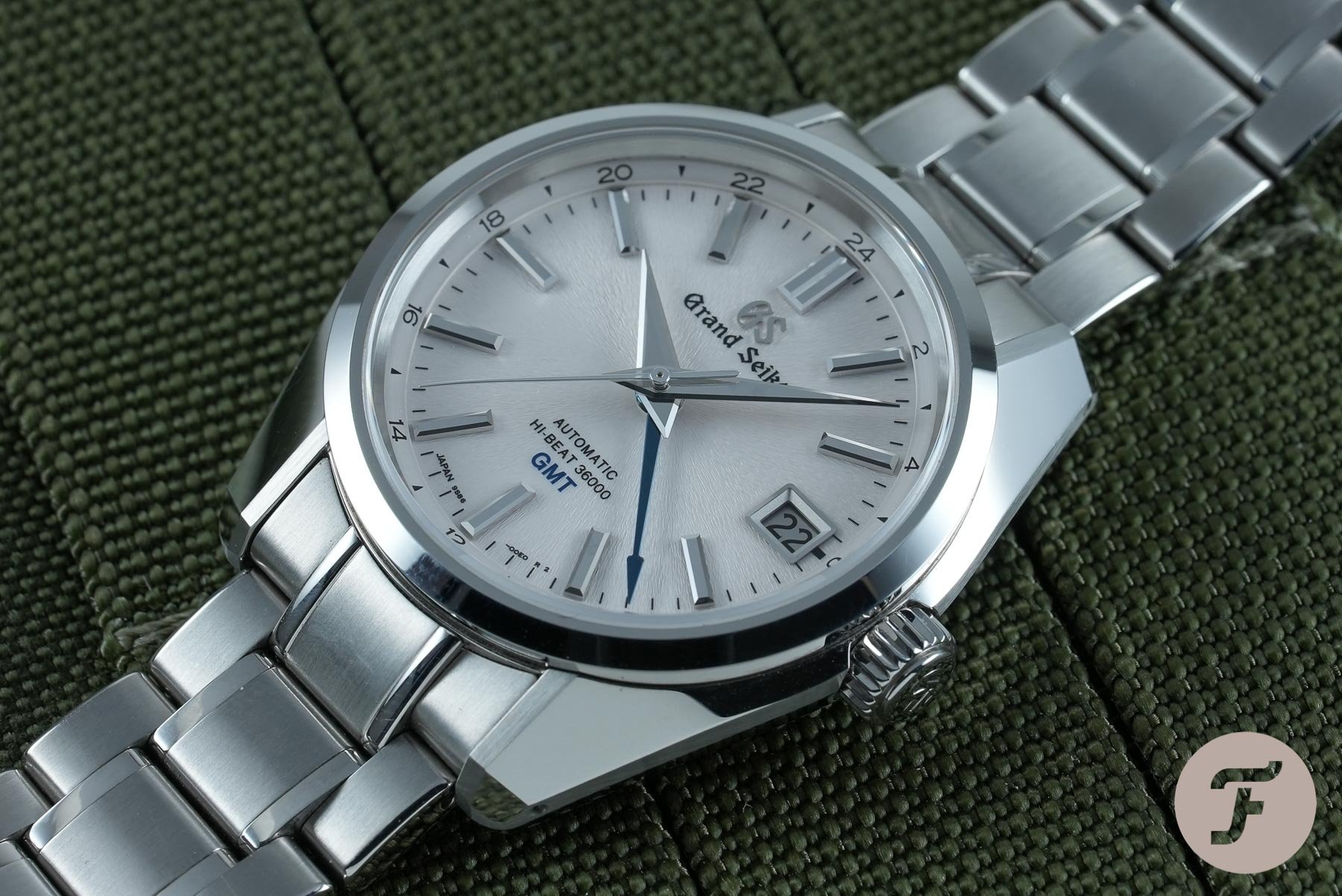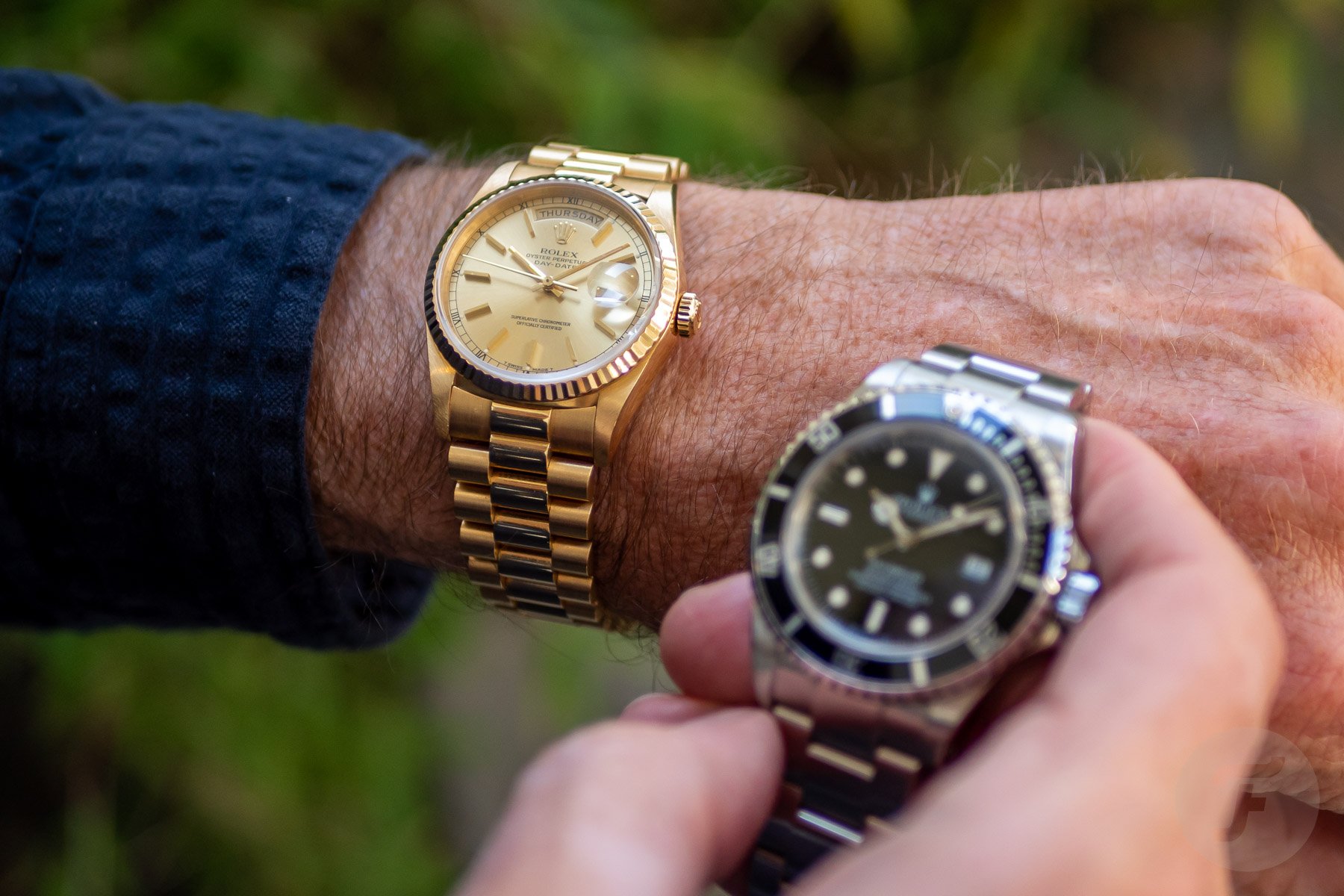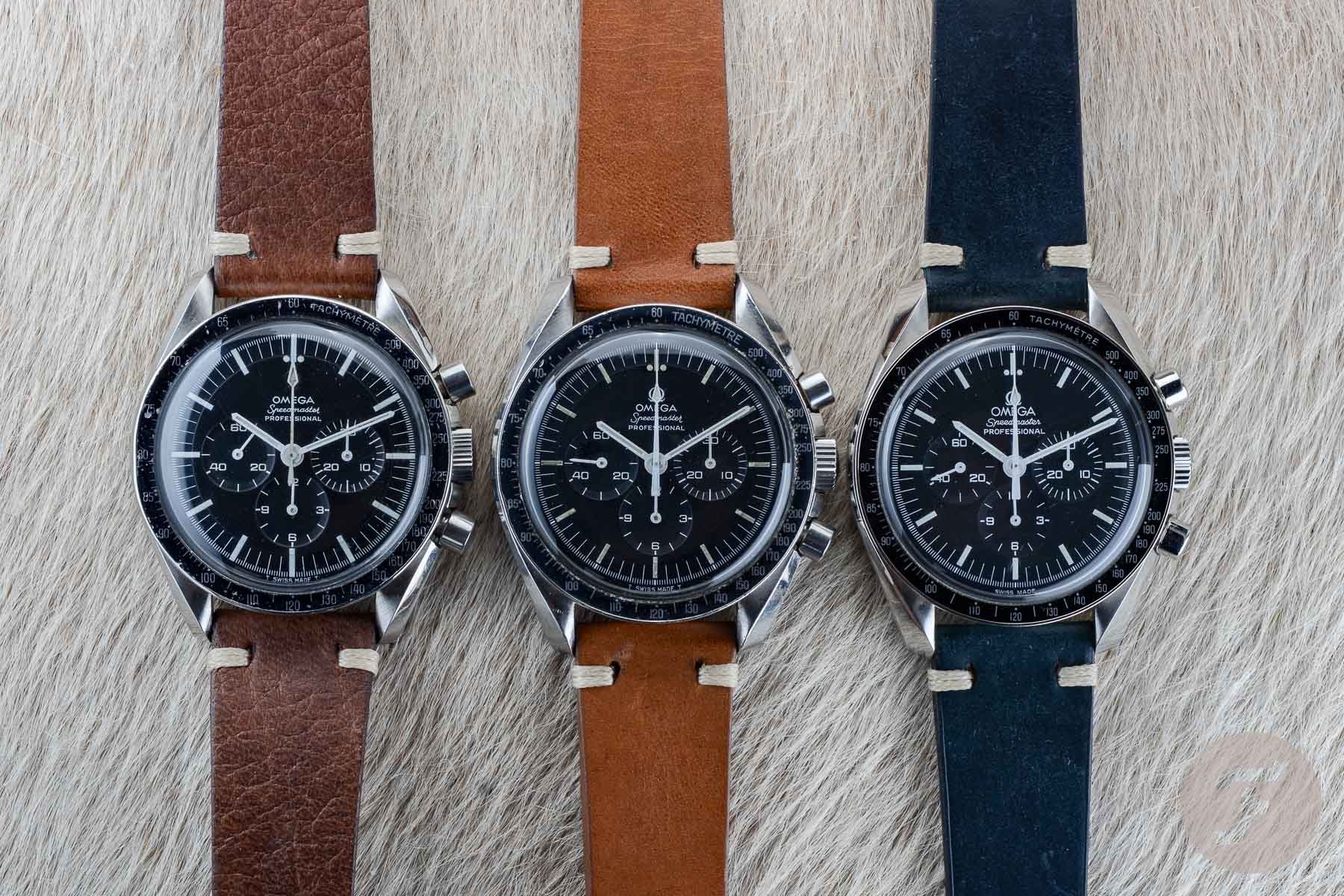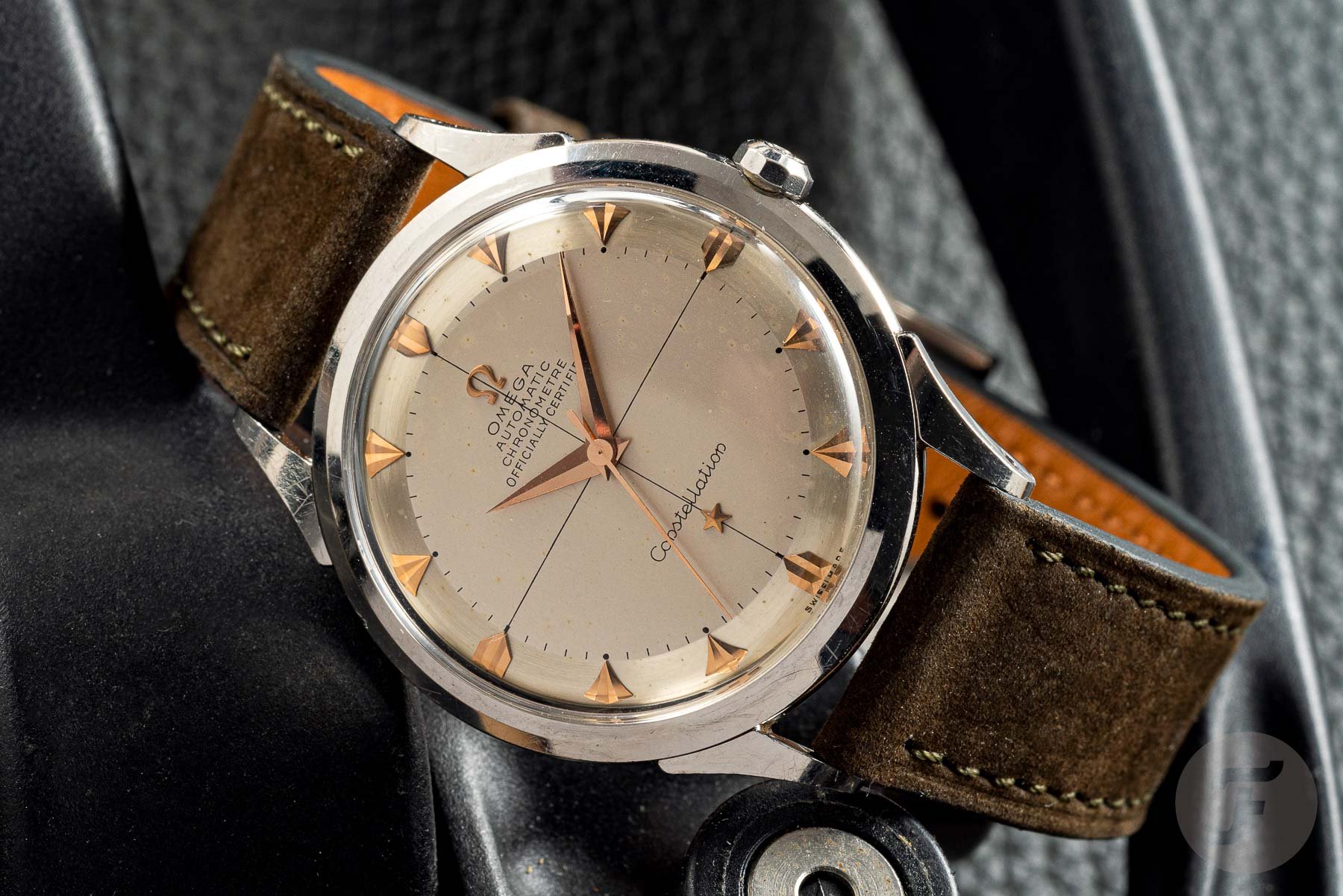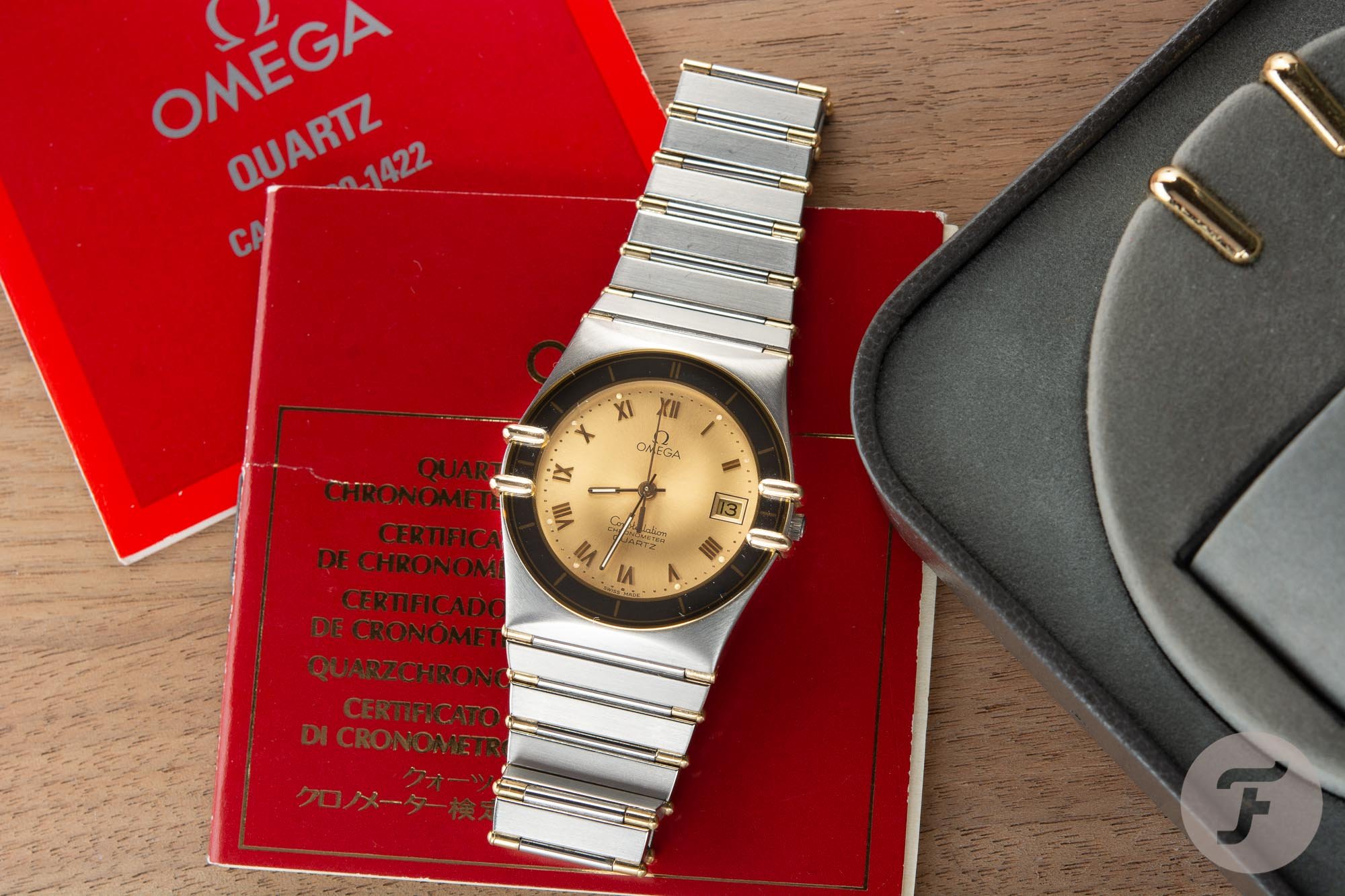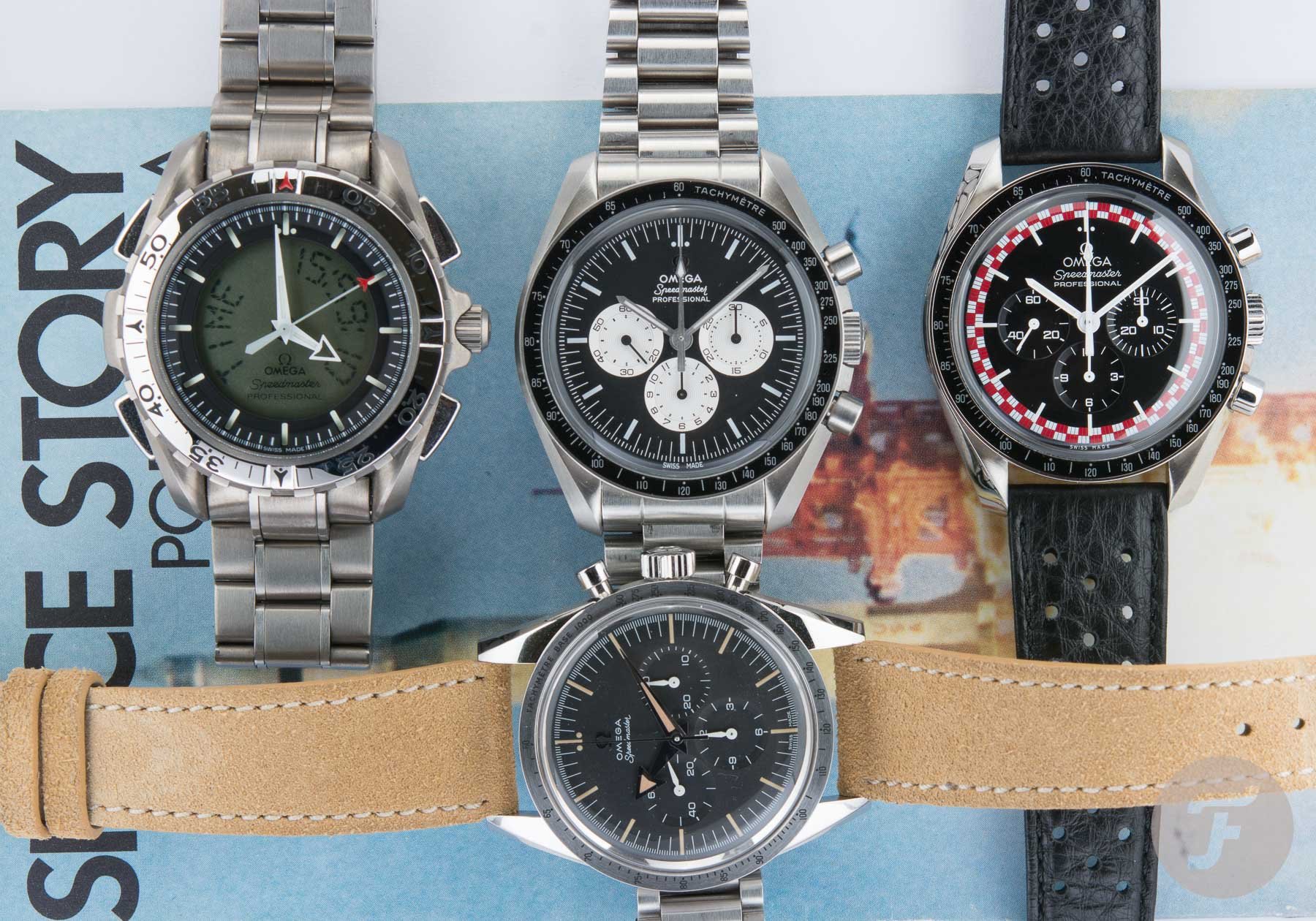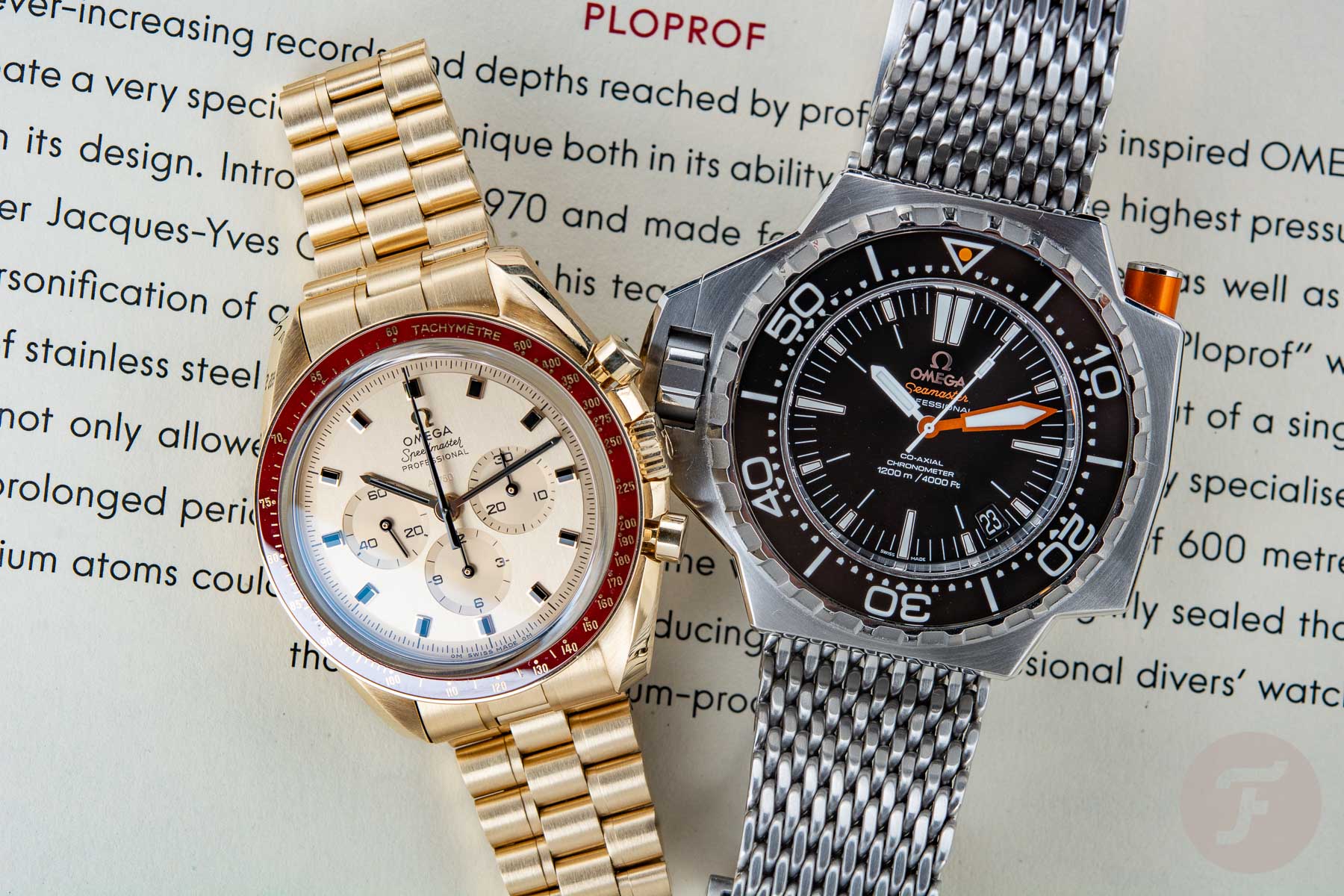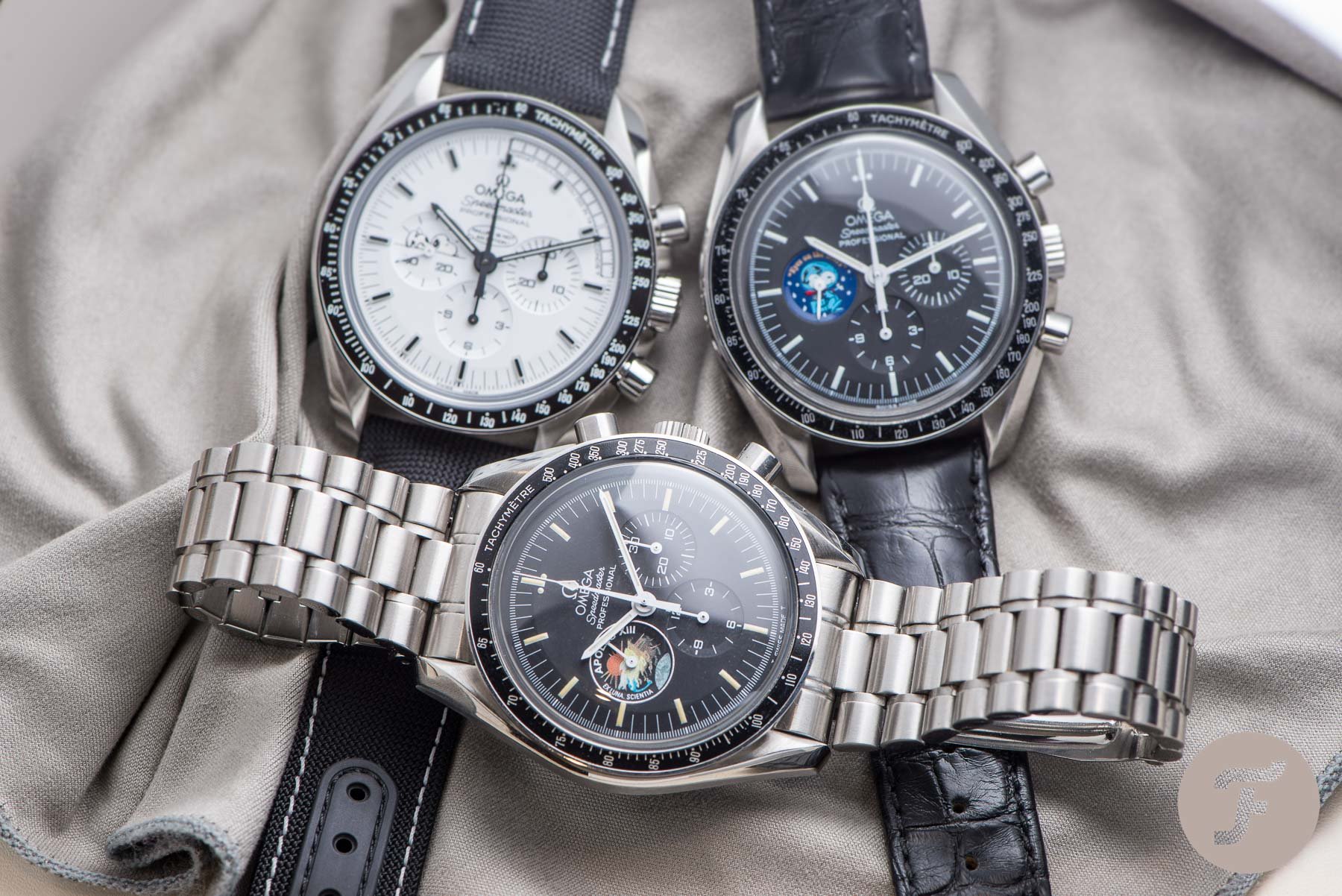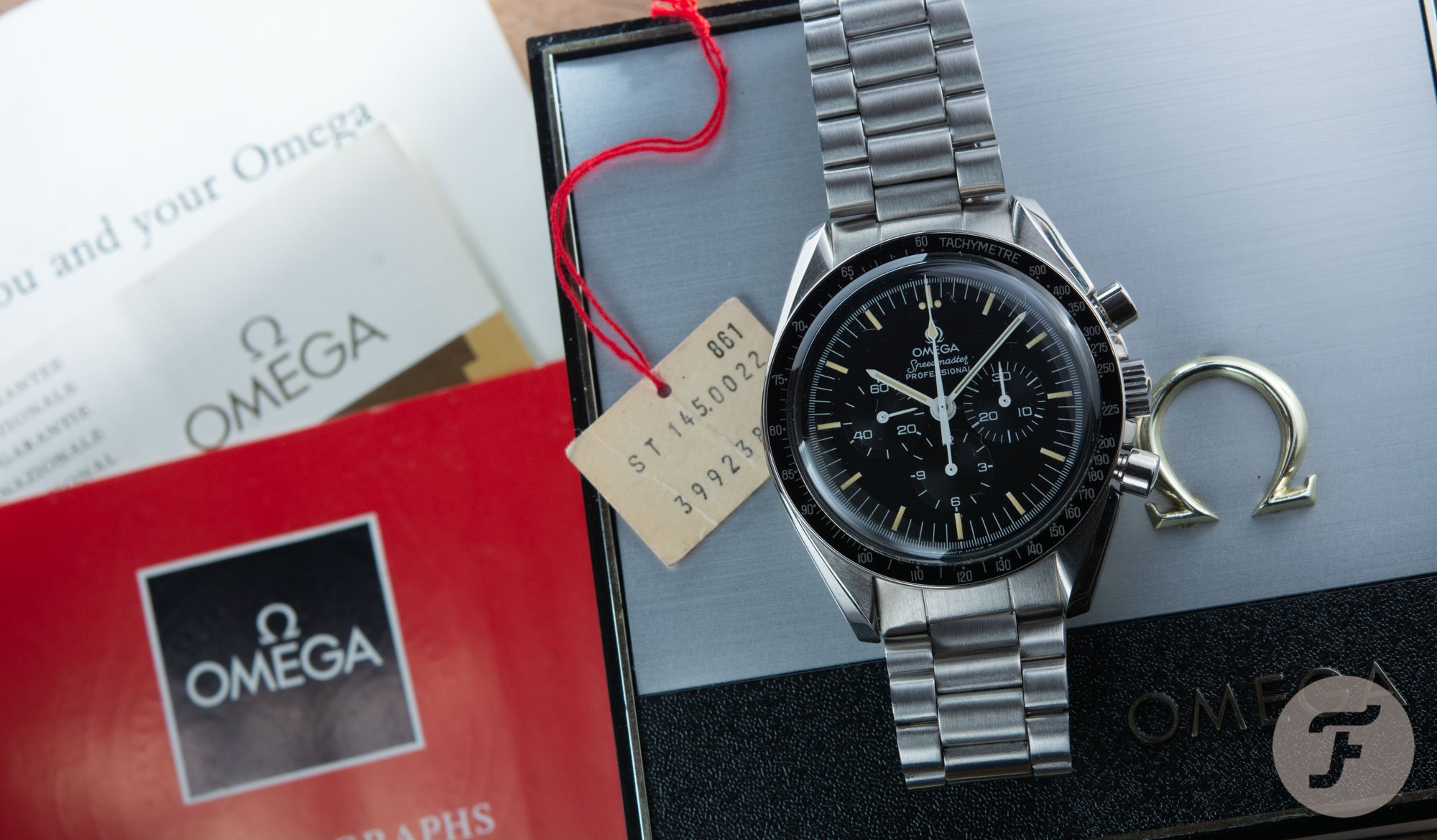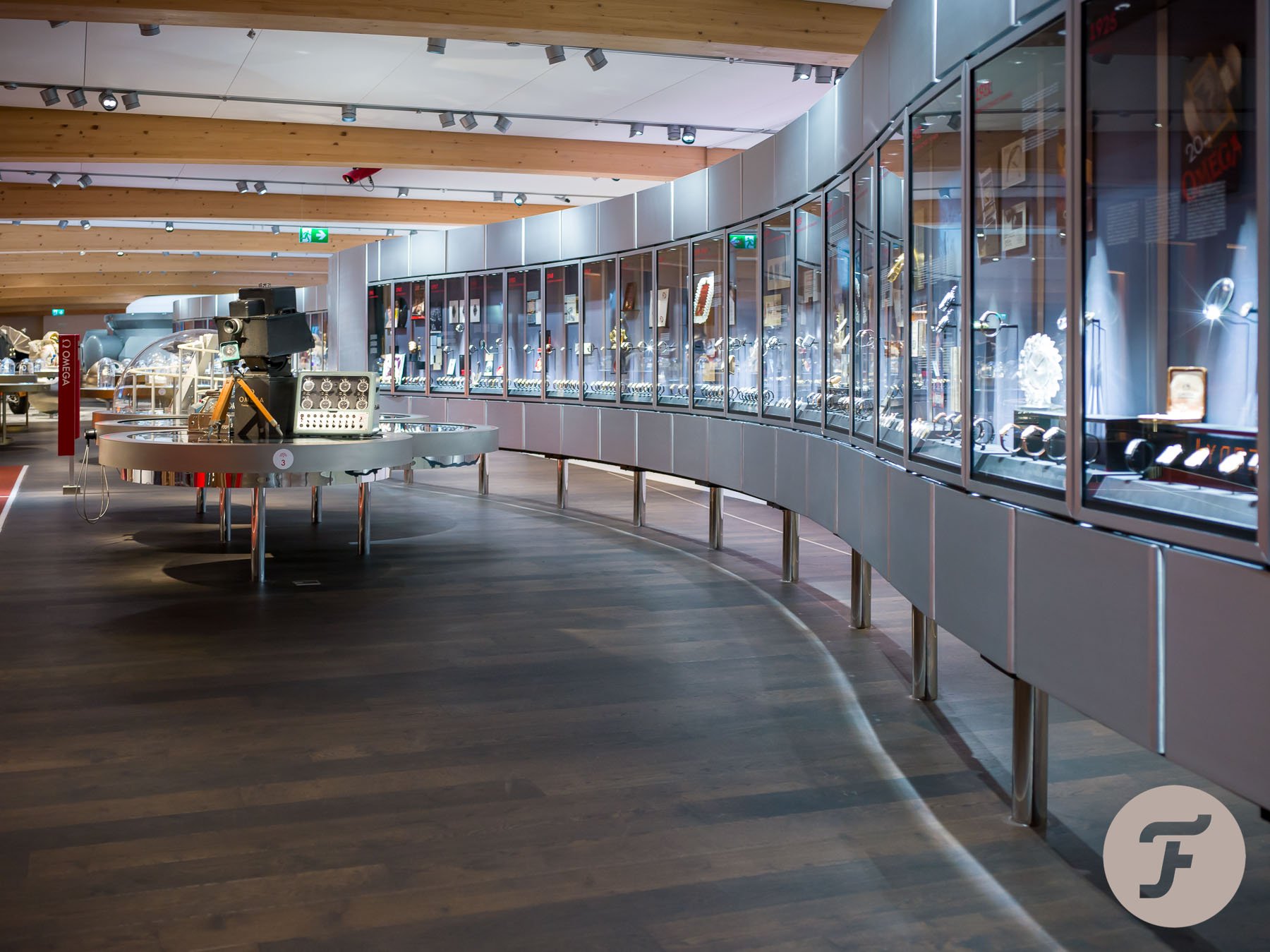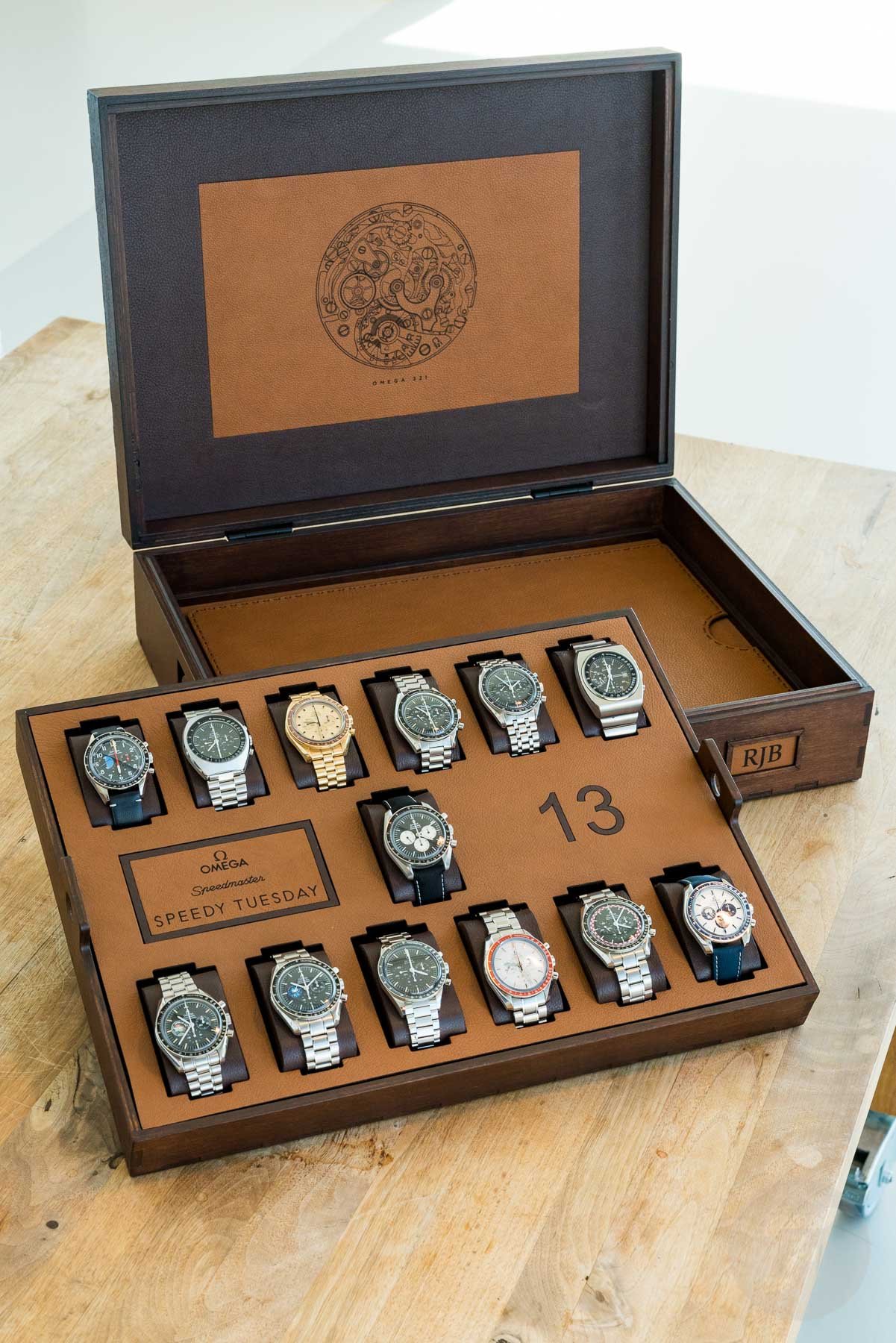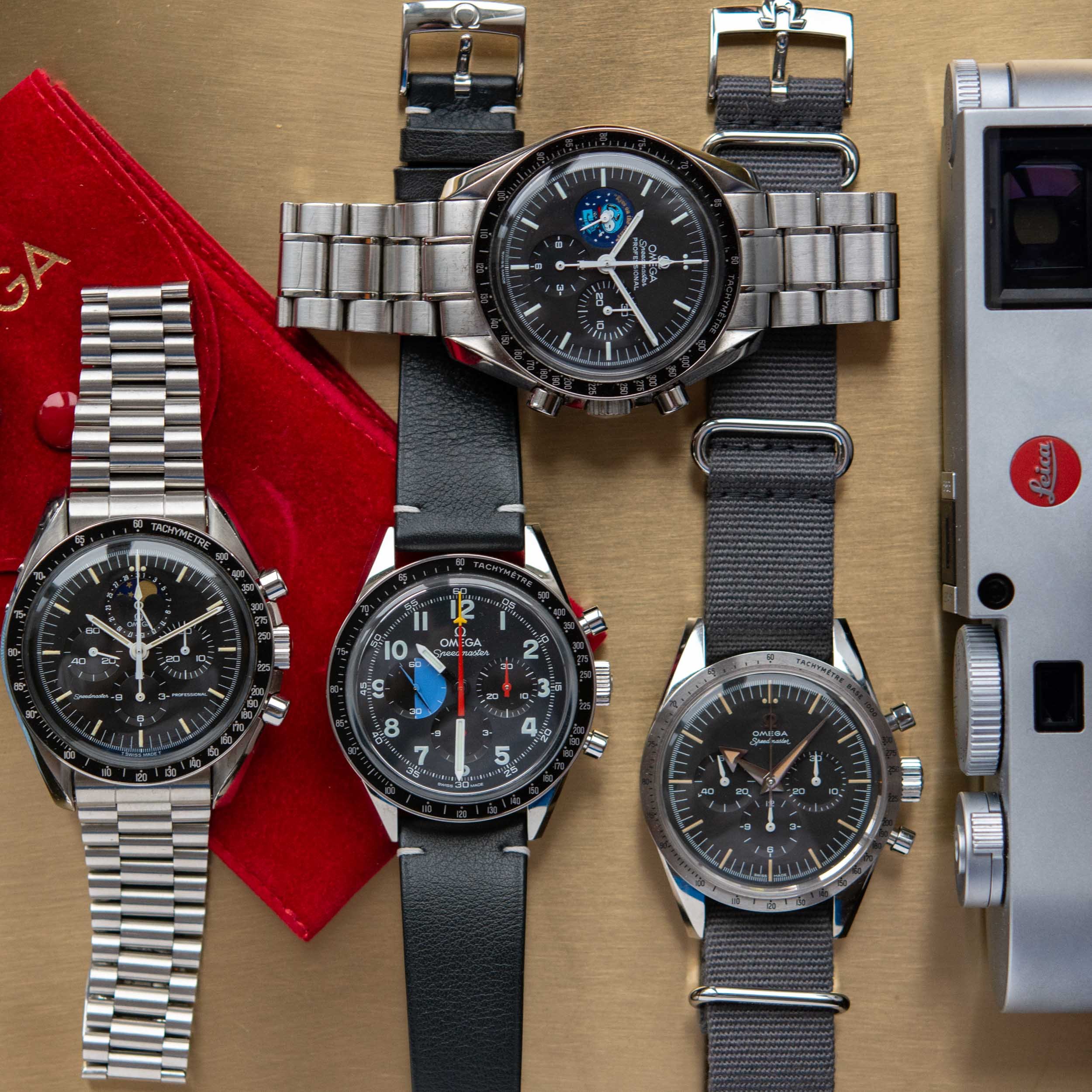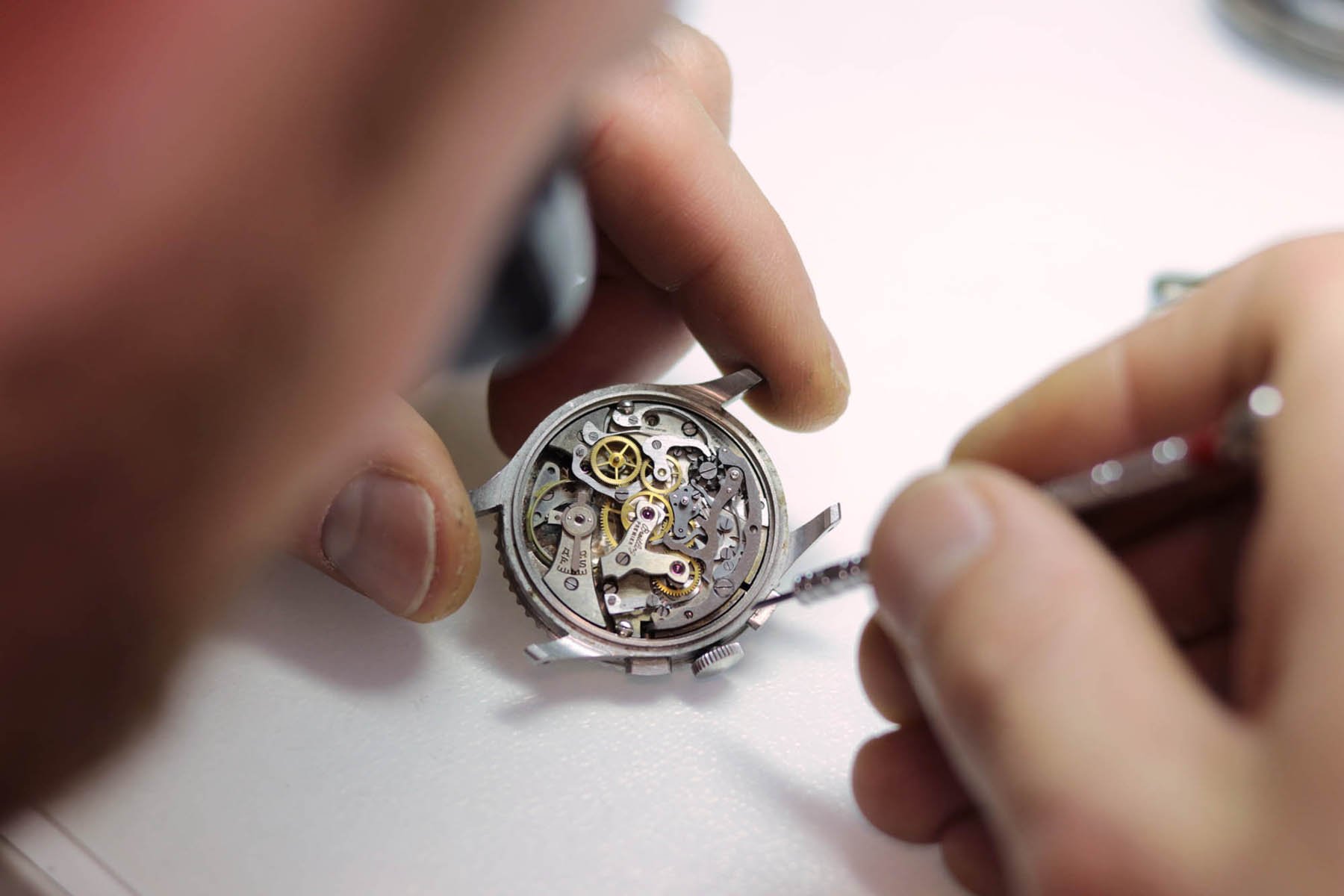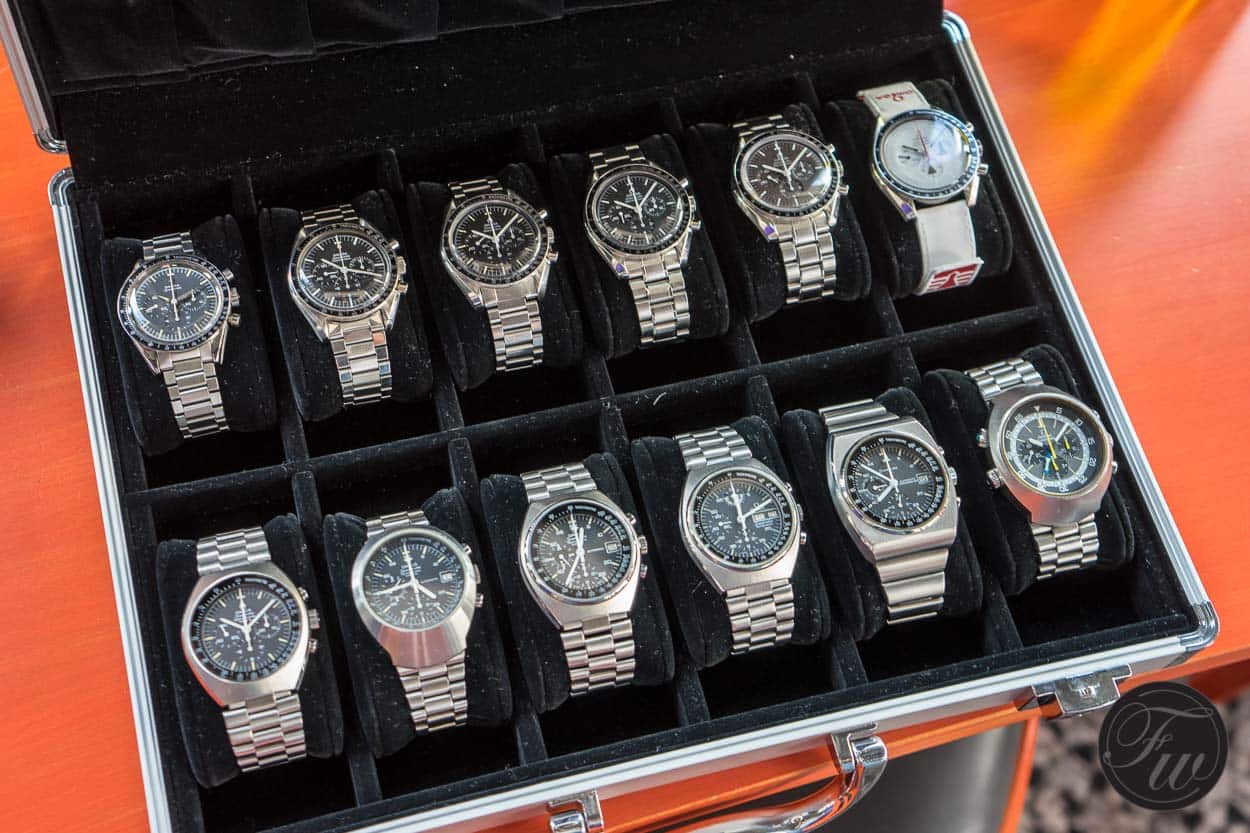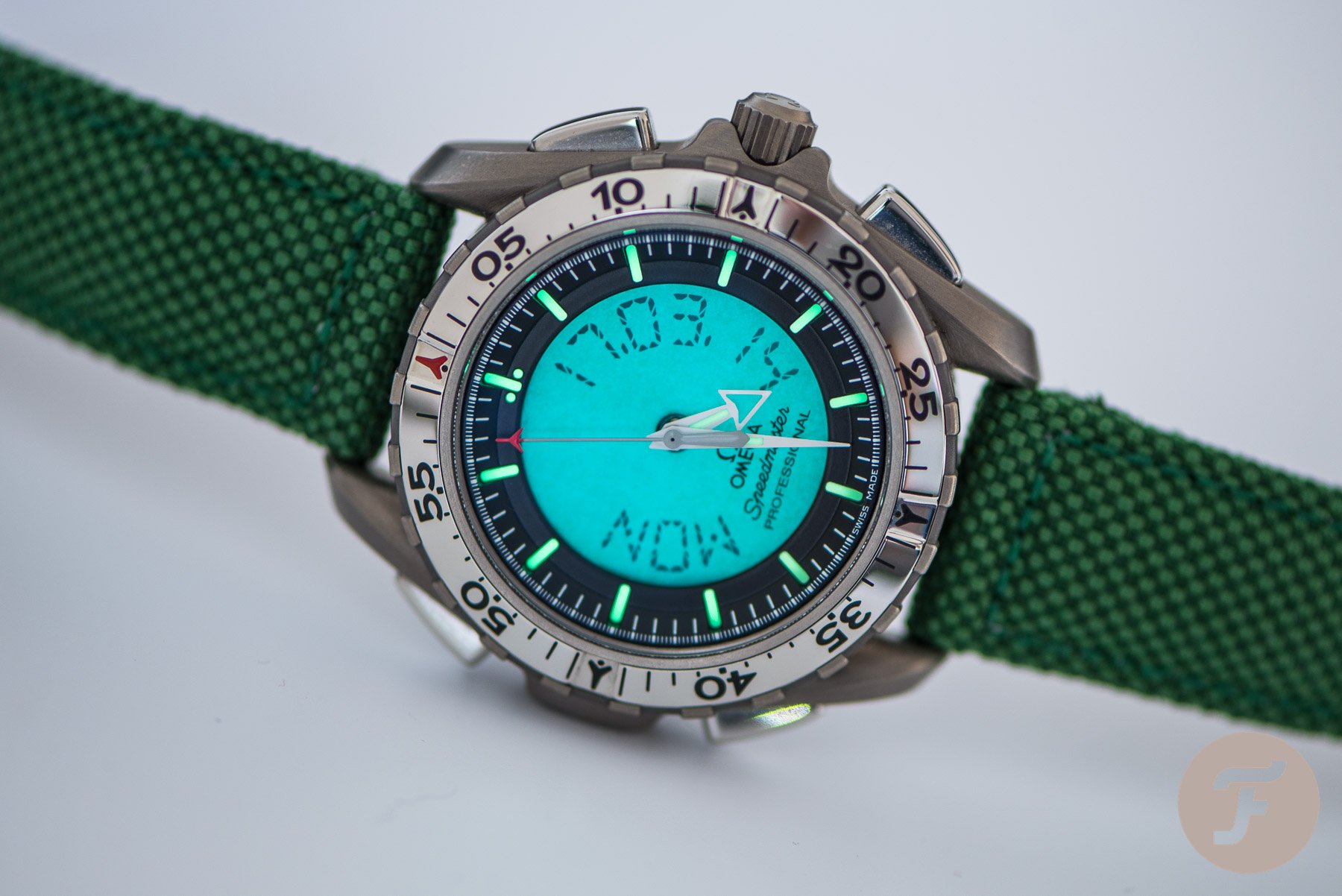Fratello Collector’s Week 2.0 — Being A Mono-Brand Collector Isn’t A Sin
For Fratello Collector’s Week 2.0, our editors are sharing their collecting philosophies. It’s my turn, and not by coincidence, it’s a Tuesday. I collect watches, and my core collection is made up of Omega Speedmaster and Constellation models. Let me tell you about my collecting journey, the mistakes I made, and the golden rules I (try to) respect.
I’ve been a hoarder/collector all my life. As a kid, I collected comic books, resulting in boxes full of them that still need to join me every time I move houses. With comics, it was very straightforward. I just collected (all) the albums of my favorite series. Although I know of some collectors who collect all series of a certain brand, this is not a very common to approach watch collecting.
That first Speedmaster I bought in 1999
When I got my first Omega Speedmaster Professional in 1999, I thought that was it (and it could have been). But along the way, I started to buy more of them, and before I knew it, I had a collection. But before I did so, I just bought the watches I liked and wanted. I made more impulse purchases than I would have liked, even when it came to more expensive watches (Audemars Piguet, for example). I realized, however, that “the hunt”, the journey of purchasing that special watch, was the most fun.
Not only Omega
I clearly distinguish between collecting and buying watches that I simply enjoy wearing. Although I am a fan of Grand Seiko and Seiko and have several watches by them, I don’t consider myself a collector of those brands. I own watches from Breitling, Rolex, Tissot, Chronoswiss, G-Shock, and a number of microbrands, and you could say that’s a collection, but I don’t collect them.
When it comes to buying these, there’s not much thought behind it other than, “Nice watch. I’d like to wear one of those.” I have the models I like to own and wear, and that’s it.
Collecting Speedmasters in the 1990s and 2000s
Acquiring my first Speedmaster was an isolated journey. It was simply a matter of buying the right model for the right amount of money and making sure everything was OK according to the information available back in the ’90s. However, as I became more serious about collecting Speedmasters, I made it a point to do a lot of research. Especially when going vintage, there’s homework to be done. I always try to go for original watches with the original parts. With Speedmasters, I try to get a reference for the Moonwatch from every period. Not every iteration, as that would be a bit too much, but I have my share of iterations of the regular Speedmaster.
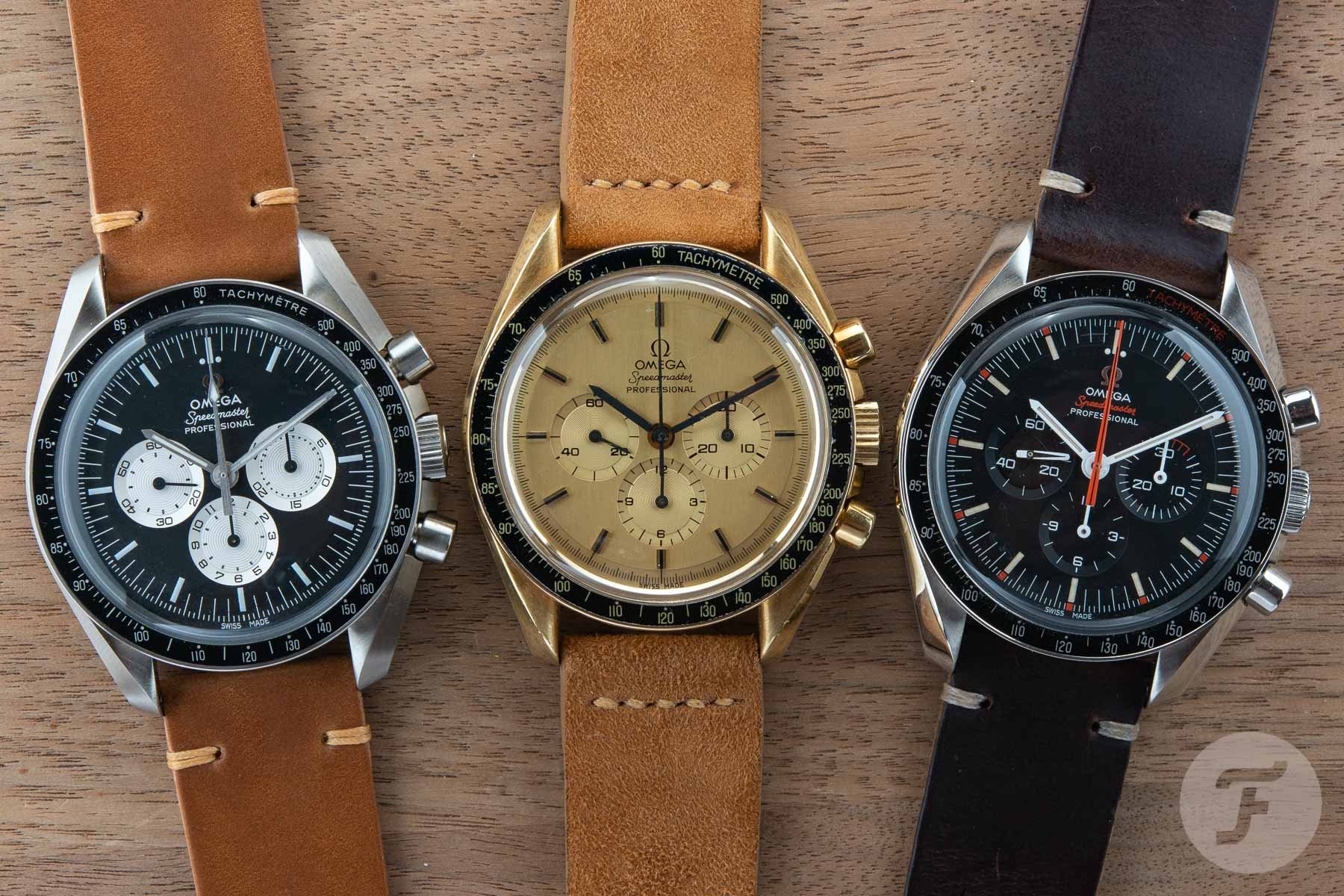
The gold 1980 Speedmaster Professional and the two Speedy Tuesday models that we did together with Omega
Building up a collection was a slow process
Building up my collection took a long time, and I bought and traded many pieces until I was satisfied with what I had. Since I started at a relatively young age (my early 20s) with little money, a lot of “trading up” took place. What helped was the era of collecting. In the late ’90s and early ’00s, the prices were much friendlier than today’s market prices, not only for Rolex but for all brands. And when going after certain Speedmasters, I was also lucky to get help from people like the legendary Chuck Maddox, who said, “Chronographs, like most finer things in life, only improve with time.”
Besides Speedmasters and a focus on the Moonwatch models, I also collect Omega Constellation watches. I recently added my “grail” model, the first Constellation reference from 1952 with the bumper automatic caliber 352 inside (I wrote about it here). But searching and buying a full-set Omega Constellation “Manhattan” from 1982 brought me just as much joy, to be honest.
Although I have and have had watches by many different brands from Swatch to Audemars Piguet, I consider myself a mono-brand collector. The Speedmaster and Constellation collections I have somehow make me feel “in control” of purchases. If I collected pilot’s watches, dive watches, or whatever style from all sorts of brands, it would require me to study all these different brands, stories, movements, etc. It would also make me feel obligated to connect with all these brands and visit different brand forums/resources. I don’t have to go in-depth for the watches I will just wear, like those from Rolex, Grand Seiko, Tissot, or whatever brand.
Being a mono-brand collector doesn’t mean I don’t care for other brands or don’t see the charm of other brands. I just don’t have the time and resources to also get myself into other watches from other brands. I would love to have some Dirty Dozen watches, vintage Grand Seikos, or some vintage Longines Conquests, for example, but it’s just not feasible for me now.
My golden rules for collecting
Over time, I made some (big) mistakes. Buying the wrong watches, bidding on fake parts, paying too much for things… Been there, done that. It’s all part of the process, and you pay a “learning” fee. I have developed a set of golden rules for collecting watches, which I am happy to share with you. They might be open doors to you, but sometimes you need to kick them in anyway.
Always buy the best you can afford, even if that is not the exact reference you want. This applies to Speedmasters but can also apply to any other watch that has been in production for a while. If I have X budget, I would rather buy the best Speedmaster Professional 145.012 or 105.012 for that sum than spend it on a 105.003 that is in mediocre or at least questionable condition. That said, if the 105.003 is your grail, keep on saving up.
Don’t worry about boxes and papers with vintage watches. The condition of the watch counts, not the cardboard box or some papers that came with it. They’re nice to have, but the focus should be on the watch itself. If you can choose between a full set in so-so condition, but the same amount allows you to buy the watch only in mint condition, go with the latter. However, if it concerns a modern watch, especially a limited edition, always go for a full set.
Reaching out
Reach out to the brand if you have questions or need parts. Yes, there are a lot of parts being offered on eBay and Chrono24. But often, if you reach out to a brand, you will find that they are more than willing to help you. Reaching out to a brand, especially if it has a vintage department, often also gives you an insight into the story behind a certain watch or reference. Remember, most of the guys working there are just as passionate about watches as you are. And they’re happy to talk to you. Often, they can also debunk some “facts” that are posted in Facebook groups and forums.
Go to watch fairs. I’ve visited many watch fairs, where I also have bought several watches. It requires you to do some homework in advance, as looking things up on the spot is a bit stressful, I find. Prices are often friendlier than online, but you need to know what you’re looking for and keep an eye on all the details that matter to you. Talk to the sellers and other collectors, and you’ll learn more about the watches you’re after. It might also expose you to different watches that you never considered before. I remember seeing those Heuer Daytonas (that’s right) with brownish dials, and I still can’t get them out of my head (although prices have gone up tremendously since I first spotted them).
Set yourself up for success
As mentioned a few times already, do your homework. Even after all these years, I don’t dare to buy certain watches blindly if I’m not very familiar with them. Learning from forums, books, websites like this, and other sites will help make you a more confident buyer. Don’t be afraid to ask questions, also to the seller of the watch. He or she will see that you have a genuine interest. Being confident and patient will reduce the likelihood of making expensive mistakes.
Last but not least, find yourself a good watchmaker that you can trust. The good thing about collecting (vintage) Speedmasters is that Omega has a very good workshop in Biel for these watches. They respect the originality of a watch and do not replace parts when you indicate this. It is a real bonus that Omega (some other brands also have pretty good vintage departments) can support vintage collectors with service and repair. It’s one thing that holds me back from collecting (vintage) watches from brands that have ceased to exist. Servicing a generic movement will not be an issue, but replacing brand-specific parts might be.
Priorities, priorities
A collection is never complete, whether it’s because there’s a financial limitation or because there are still new watches that you want to add. I am pretty sure I will never buy a vintage Speedmaster CK2915. Even if I had the financial resources, it would be too much money for me to put into one watch. Luckily, there are so many Speedmasters out there. There’s always something on the wish list that I can add to the collection, be it a relatively cheap Speedmaster Split-Seconds from the early 2000s or another vintage Speedmaster from the 1970s. It’s a matter of prioritizing what you can and want to spend on it. As for my Constellations, although I have a few of nearly every decade, I would love a nice pie-pan model, preferably in gold.
Never underestimate the power of a story
Let me end this article by saying that it’s not always about the watch itself. It can also be very much about the story behind a watch that makes it so attractive to buy or collect. One of my Speedmaster watches, the X-33, was one of the first to be produced. It was presented to an astronaut during the official introduction of the Speedmaster X-33 to the market. He was my childhood hero; every kid watched him on television, going into space with the Space Shuttle. It’s truly an honor that I had the opportunity to buy his watch from his family after he passed away. They contacted me and gave me the chance to buy the watch from them. I did not chase them for it. It’s a valuable watch to me, despite “just” being a quartz iteration of the Speedmaster to others.
What do you think of my approach to collecting watches? Do you consider yourself a mono-brand collector too? I’d love to hear about your collecting philosophy in the comments.

